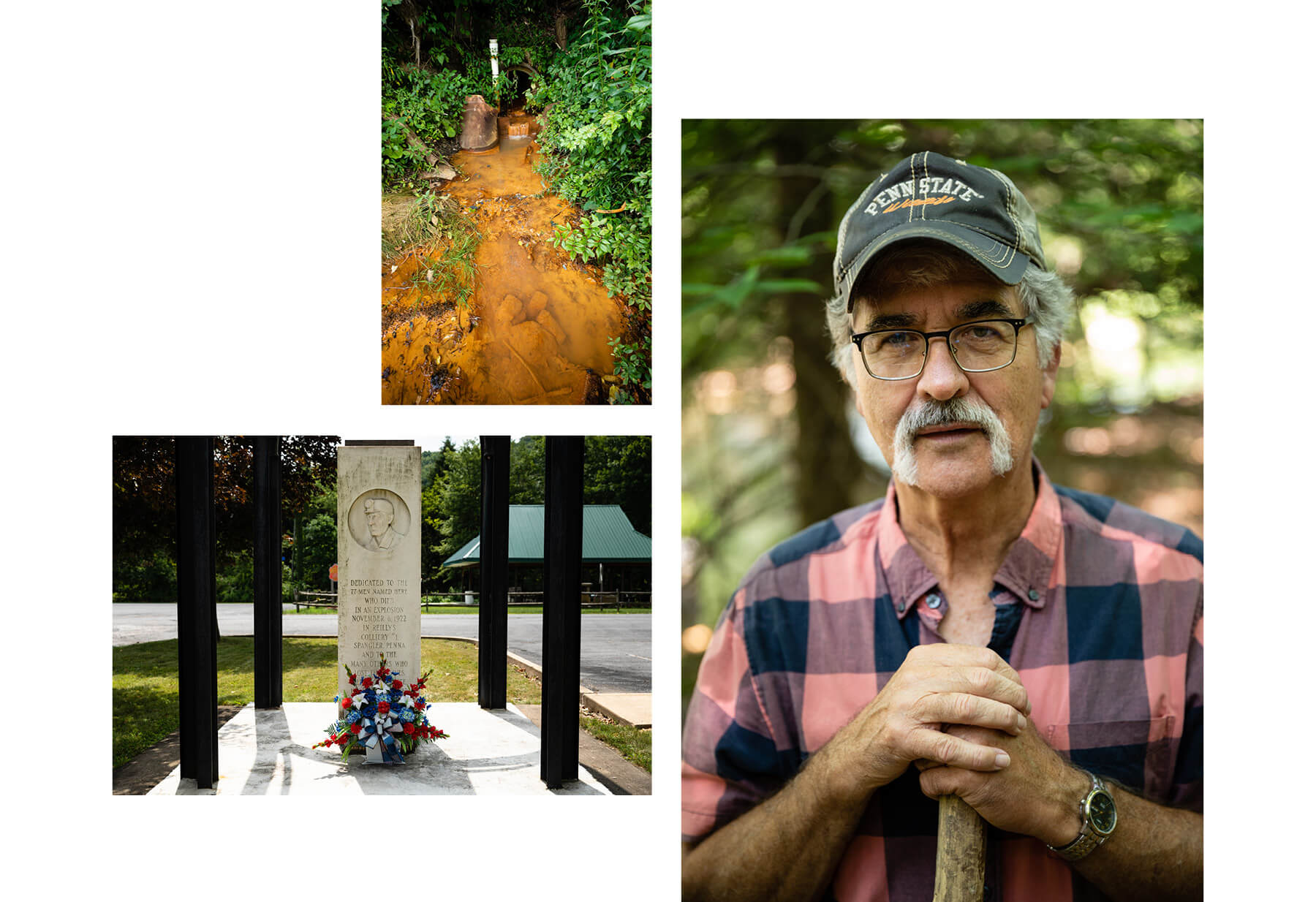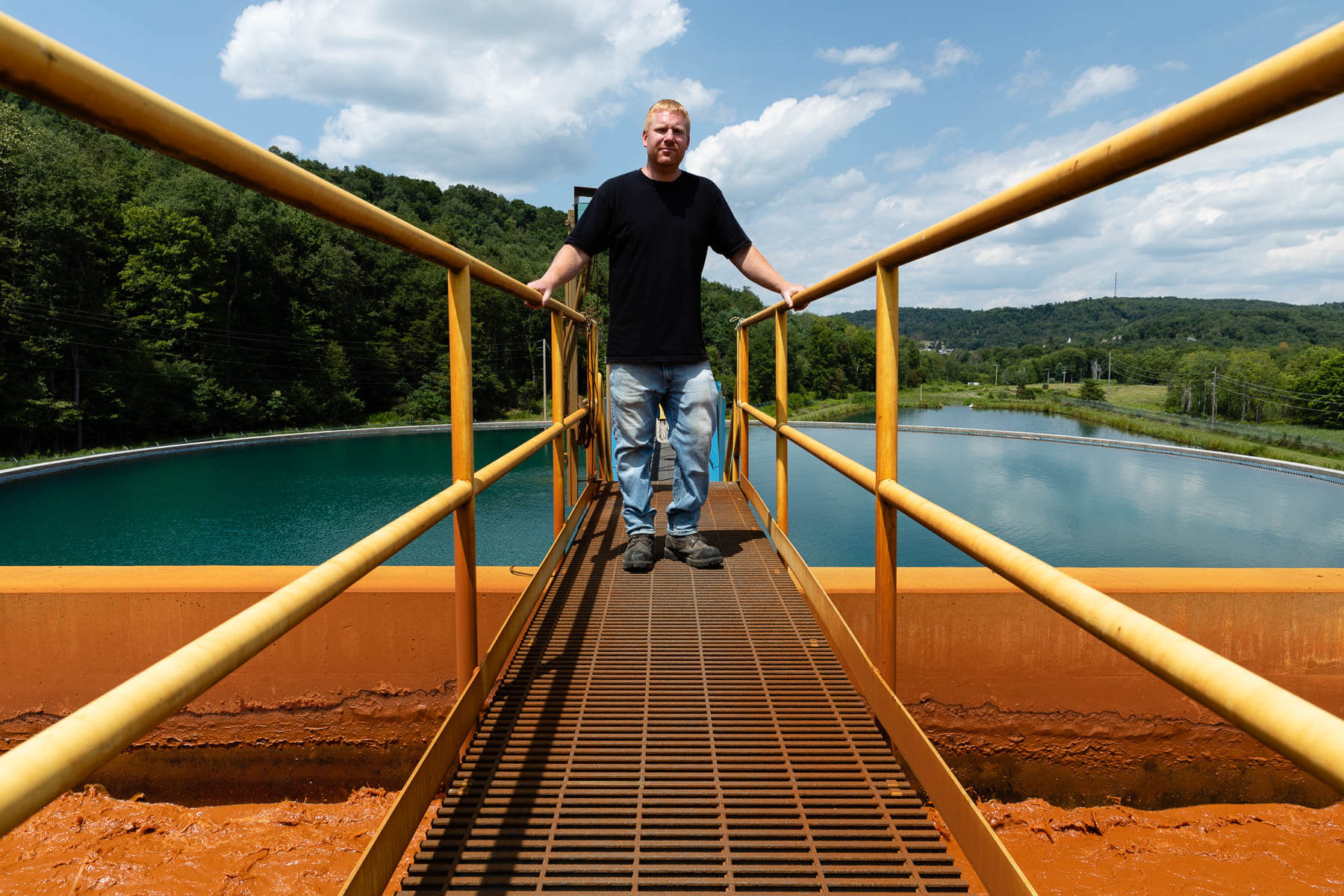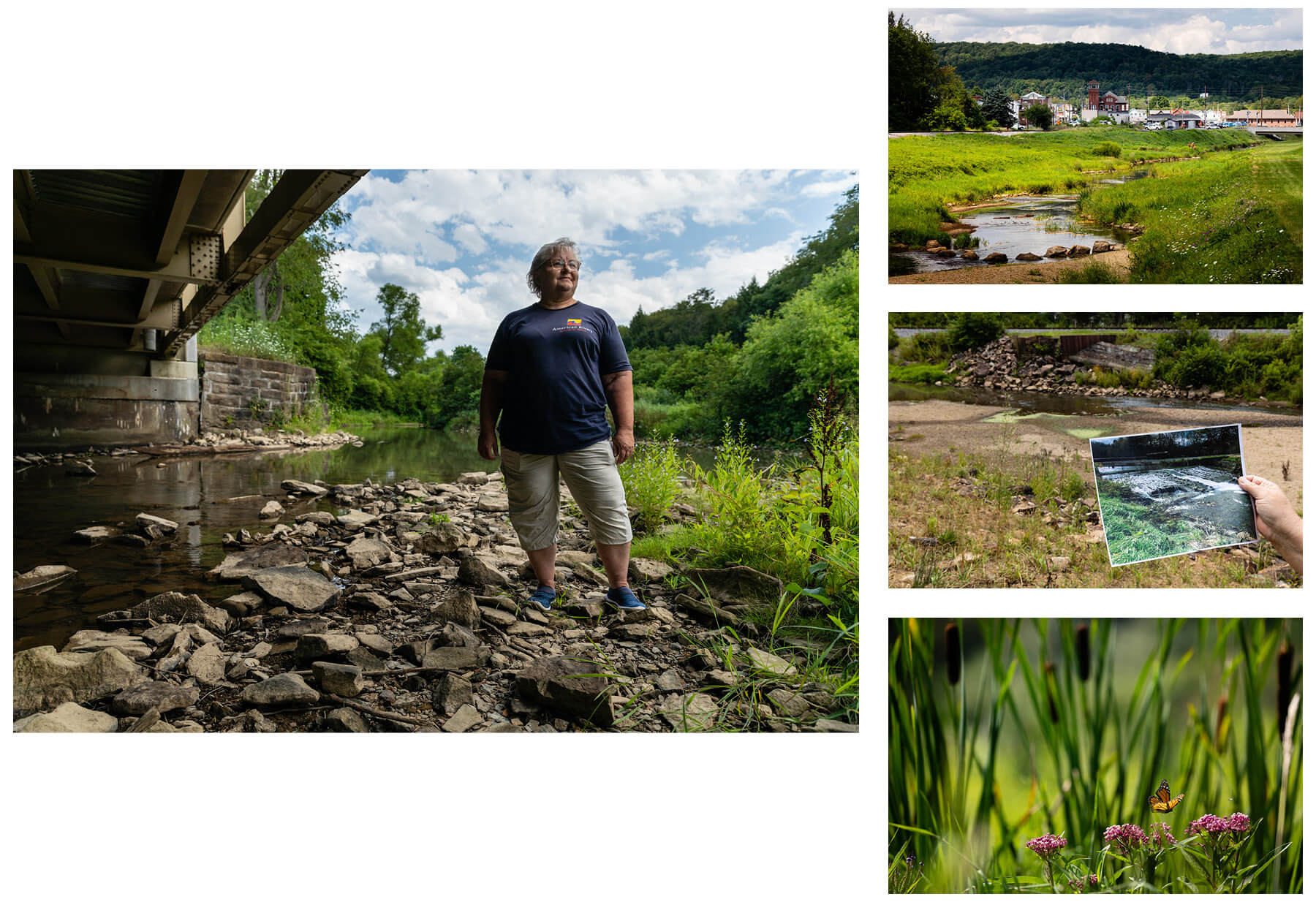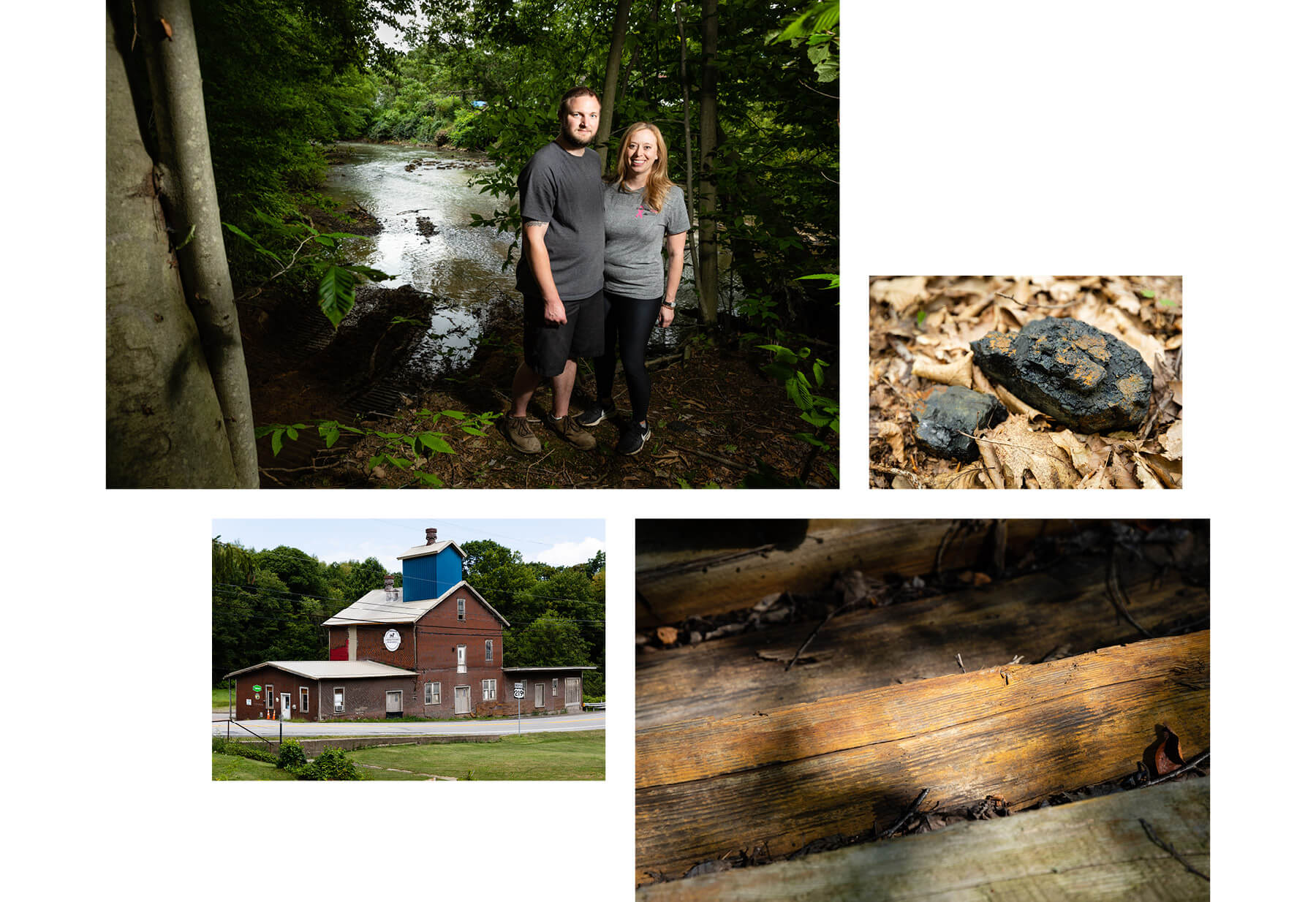From ‘Red and Dead’ to Class A Fishery, West Branch Susquehanna rebounds

Fishing continues to get better and better along the headwaters of the West Branch Susquehanna River in Cambria County, Pennsylvania. Between 2017 and 2019, three aging dams were removed, improving water quality and fish passage. Led by the nonprofit American Rivers, the dam removals were something of a final touch to a decades-long restoration story—one that dates back to a time when a few dams were the least of the area’s concerns.
“Thirty years ago these rivers were red and dead,” said Lisa Hollingsworth-Segedy, director of river restoration at American Rivers. The rust-red color she references is a product of centuries of unregulated coal mining that occurred throughout the Commonwealth.
“When you came down and played in [the river] your clothes would be orange,” recalls Megan Turner, 37, who lives in northern Cambria County.
But after decades of work by state and federal agencies, nonprofit organizations and local activists, several tributaries along the West Branch have sprung back to life. Wild brook trout, brown trout and other cold-water fish species are coming back. And with the dam removals, these species have more habitat to enjoy.
“Now that the streams are supporting life, let’s give the life all the river it needs,” Hollingsworth-Segedy said.
To understand the significance of catching wild trout in the headwaters of the West Branch, you need to unpack Pennsylvania’s uphill battle against the environmental impacts of coal mining, an issue that’s plagued the Commonwealth for centuries.

Tackling an “abandoned” problem in the West Branch
Since the late 1700s, Pennsylvanians have been heading into the mountains to mine coal. The industry supported two World Wars, an Industrial Revolution and local economies across the Commonwealth, and persists even today in some parts of the Commonwealth. Though with the boom and bust nature of coal mining—where a significant drop in demand or political shifts towards clean energy can eliminate a mine’s buyers—hundreds of coal mines would close across the Pennsylvania and in Cambria County, stripping entire towns of their main livelihood.
Mine closures also left behind another problem. More times than not, those running a mine would leave behind openings in mines and thousands of tons of coal refuse, “boney piles” to a Cambria County locals. When sulfur minerals produces from mining operations comes into contact with air or water, it can create sulfuric acid and dissolved metals that can be carried into waterways, a process known as acid mine drainage (AMD). While this can be an issue at some active mines, it predominantly is associated with abandoned mines that predate the passage of the Surface Mining Control and Reclamation Act of 1977 (SMCRA). 2013, there were 289 abandoned mine lands in Cambria County and 629 in adjacent Clearfield County, both of which include parts of the West Branch headwaters.
SMCRA established regulations for mining companies to follow, as well provided funding to clean up sites that were opened prior to 1977. This was accelerated in 2000, when the Commonwealth’s Growing Greener initiative provided funds to treat abandoned and operating mines that came before or after 1977.
With this progress, a variety of groups began focusing on the West Branch, with the formation of such initiatives as the West Branch Susquehanna Restoration Coalition. Refuse piles of coal were removed, discharge sites where water moved through underground or above-ground mines were plugged and water treatment plants were built. In 2011, the Lancashire AMD Treatment Plant was constructed to remove iron oxide from groundwater pumped from the Lancashire No. 15 mine before discharging it into the West Branch.
“I think everyone starts to see [the treatment plant] as the tipping point,” said Tom Clark, mine drainage program coordinator with the Susquehanna River Basin Commission.


The Lancashire facility treats an average of roughly six million gallons of water every day, positively impacting roughly 10 miles of the West Branch downstream. When water leaves the plant, it’s clean, clear and a cold 52 degrees enjoyed by trout.
By 2018, the wild trout fisheries in the West Branch headwaters became so healthy that the Pennsylvania Fish and Boat Commission designated 18 miles under the protection of its All-Tackle, Catch-and-Release regulations.
“After about a decade or so of us and our partners doing numerous improvements, we have a Class A fishery,” said Mark Sausser of Pennsylvania Fish and Boat Commission, referring to the headwaters of the West Branch.
American Rivers “bats cleanup” with dam removals
Even after a river rebounds from the effects of acid mine drainage, a dam can still keep it from a full recovery. Hollingsworth-Segedy said she prioritizes waterways where improvements have been made but a dam remains, referring to the strategy as “batting cleanup.”
“You’ve changed everything about a river by putting a dam in,” Hollingsworth-Segedy said. “You’ve changed the water quality, you’ve changed the temperature, you’ve changed the oxygen amount and you’ve changed the [fish] access.”
Working within the West Branch headwaters, American Rivers removed two dams along Chest Creek, one in the borough of Patton, one in the village of Eckenrode Mills and another along the West Branch itself in northern Cambria County. But as Hollingsworth-Segedy explained, you can’t just remove a dam and go home. In order to restore the fish habitat and repair parts of the river that the dam damaged, you need to follow dam removal with stream restoration.

For the river restoration work, American Rivers partnered with the Cambria County Conservation District and Pennsylvania Fish and Boat Commission. The groups have been working to strengthen stream banks, plant trees and create natural habitat for fish. On Chest Creek, a wetland that had been flooded by the dam is springing back to life due to improvements on the river.
“Our surveys document 10 miles of Class A fisheries, and farther down, another 10 miles of cold-water fisheries,” said Sausser, referring to the stretch of West Branch where the dam was removed.
In Patton, people were at first hesitant to remove their dam, which had previously provided the town with drinking water until the municipal authority switched to groundwater wells. But after learning from American Rivers that removing the dam could mitigate flooding, which in 2018 caused residents to evacuate their homes in the middle of the night, Patton embraced the change.
Repaired rivers give a town new life
Turner and her partner Travis Bobik are getting ahead of the fishing and recreation revival they see coming to the West Branch.
The couple has purchased three properties along the Susquehanna and provided American Rivers access to the river in order to complete the dam removal and restoration in northern Cambria County. And as the river has recovered, they have reaped the benefits.
“From when we acquired the property to what we see now is just a world of difference,” said Bobik. “More fish, bigger fish. You also see the smaller fish. The caddis [fly] hatch coming up this year is huge.”

As Cambria County residents and environmental groups rally around the West Branch headwaters, the dream of the area being able to attract tourists and homeowners who are fond of outdoor recreation looks more and more like a reality. Nearly one-third of the West Branch basin flows through state forest, state park or state game lands, making it a tremendous resource for outdoor recreation. Nearby towns such as those in Cambria County can benefit from tourists traveling to the state parks, as well as the health of smaller streams that run past their own community.
“There is that opportunity to build jobs and local economies by adding access to hiking, biking, fishing, kayaking and hunting.”
Following the decline of coal mining, towns such as those along the West Branch of the Susquehanna have struggled to replace its contribution to the local economy. But with improved land and waters, there’s opportunity for new jobs to be created around recreation and tourism. Within Pennsylvania’s portion of the Chesapeake Bay watershed, it is estimated that outdoor recreation generates $14.5 billion and creates 125,324 jobs. Improved fisheries, increased access to the water, connected hiking trails and other efforts can all spur this progress.
The revival of the West Branch headwaters can only mean good things for the Chesapeake Bay and its largest tributary, the Susquehanna River. Stories such as these can inspire community across the watershed to earn back valuable natural resources that they’ve lost.

Comments
New to the area, I have enjoyed the scenic view along the banks of the Susquehanna, West Branch, for months now. But walking up close and along the bank, I have been sadly disappointed to find no signs of either river creatures, including fish, or wildlife in need of a drink from its waters. And so I try to imagine the time when native Americans prevailed there. And were able to sustain themselves on a rich and abundant supply of food sources once offered by the now lifeless looking waterway.
I enjoyed reading your article as I grew up right next to the West Branch and my family owned the mill that you have mislabled. I hope you don't mind, but I would like to offer two corrections. If you can, it would be good if the article could be updated. BTW I can't believe that woman who talked about playing in the river - that was raw sewage up until th '90s! ICK
Corrections: In the first group of three, the memorial is in Northern Cambria (Spangler), not Patton. The Reily Mine Disaster was in Spangler.
BOTTOM LEFT: A memorial in Patton [sic], Pennsylvania dedicated to those who lost their lives during a 1922 coal mining accident.
Correction: In the second group of four, you have the Mill that was in my family for over 100 years with the wrong name and the Mill is still operational. The name was once the Lantzy Milling Co when it was in my family and is now the Garmantown Mill & Supply.
BOTTOM LEFT: "The Eckenrode [sic] Mills used to rely on a dam for energy for is no longer operational. Today, the building stands and is used by local businesses."
Regards,
Kathleen Lantzy Steigler
The weird you see below the old damn in patton,that was a project spear headed by the patton trout nursery.
With extra effort by Tom Boyle of patton
My 1st visit to the west branch of the mighty Susky. Extremely cold temps slowed the fishing but 9 nice trout in 2 days was great. Several brownies were 16 inchers. 2 twenty inch gorgeous colored up hook jaw beauties were landed. Great job on the restoration and a sincere thank you to all the people who have done so much to save this magnificent river.
Build Solar Powered Fountains to oxygenate the water and biological filters made of hemp to cleanse the waters of pollutants. Only active pollution control will work . Next introduce fresh water mollusks like clams, oysters and mussels to cleanse the water. Certain aquatic plants can do the same and be an excellent source of food for fish.
This is GOOD NEWS. Thank You!
Great story!
Sorry we couldn’t hold those who disrespected the river accountable but knowing the river is cleaner is the best news!
Thank you!
Your comment has been received. Before it can be published, the comment will be reviewed by our team to ensure it adheres with our rules of engagement.
Back to recent stories